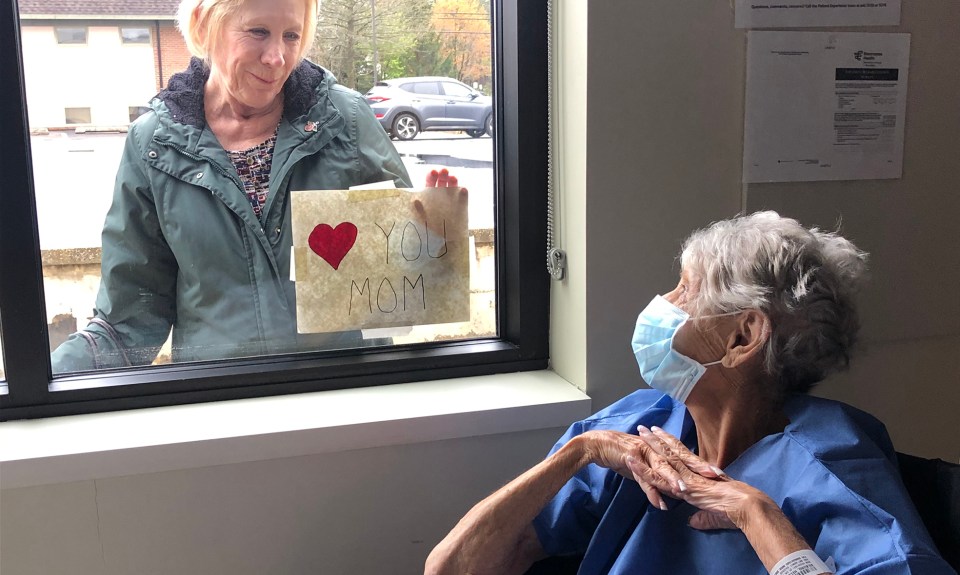When Encompass Health formed its Patient Safety Task force, it looked outside of the healthcare industry to establish innovative solutions to common patient safety concerns.
One of the first orders of business of the inaugural group was to research other industries, such as aviation, transportation and theme parks, to see how they protect their customers.
“We each had an industry outside of healthcare to study their safety initiatives,” said Lori Jarboe, CEO of Encompass Health Rehabilitation Hospital of Lakeview, and a member of the first Patient Safety Task Force. “Mine was transportation, and believe it nor not, if you didn’t know what industry it was, you would have thought it was healthcare. One of their top concerns was slips and trips.”
Falls are one of many patients safety issues the task force has tackled over the years, said Becky Bradley, who along with Lynne Lee, vice president of risk management and the Company’s then chief medical officer came up with the idea to form the task force.
The goal, she said, was not only to connect hospitals to one other, but also to seek out those in Encompass Health hospitals who were passionate about patient safety.
Those wanting to serve on the Patient Safety Task Force had to apply and submit an essay on why they were interested in patient safety.
“We were amazed at how many applications we received,” Bradley recalled. “The original task force members were selected through an application process and had to explain why they wanted to serve.”
The first task for consisted of 14 people. Today, that application process continues, and there are about 30 members, typically serving a three-year term.
Involving more than just clinicians
The application process was open to all employees, which is what has made the Patient Safety Task Force so effective, Jarboe said.
In addition to nursing and therapy signing on, hospital controllers and even IT got involved early on in the task force.
“That’s one of the things that really stood out for me in the beginning,” she said. “The representation from all areas of our hospitals – it was not just clinicians. A lot of task forces like this are made up of just nursing and therapy. It’s been really neat having plant operations, dieticians and others involved. When you think of patient safety, a lot don’t think of these groups, but they’re important.”
What it’s accomplished
One of the Patient Safety Task Force’s earliest goals was to move from a paper-based event reporting system to an electronic system. This would allow the growing Company to dig deeper into the cause and effect of adverse events. It also would allow the Home Office to identify hospitals with the lowest incidence rates and identify their best practices, which could be shared with other hospitals for performance improvement.
The Patient Safety Task Force worked with the Home Office risk management staff to identify the best event reporting vendors in the healthcare market. RL solutions was selected. However, even though it had a well-designed event reporting system with many desired features, it was primarily designed for acute care hospitals. There was not a specific inpatient rehabilitation application.
The Patient Safety Task Force convened a three-day meeting and worked with the product managers and design team from RL Solutions to customize an event reporting system that would meet the rehabilitation industry needs. Once the elements for the reporting system were defined and tested, the solution was implemented across all Encompass Health hospitals.
Today this reporting system greatly simplifies data mining and analysis at the hospital and Home Office levels. Bradley said the task force uses data from this system to identify work group performance improvement projects.
Other safety issues the Patient Safety Task Force has tackled over the years include:
- Fall prevention and reducing fall risks within hospitals
- Incorporating evidence-based guidelines into hospital processes
- Led the Company’s bed replacement project
Education is key
While sharing and implementing best practices throughout the Company is the goal of the Patient Safety Task Force, education is also a key component of it.
Members of the task force are encouraged to conduct research and share their findings with their peers.
“That was another one of our initial goals, to encourage our employees to conduct research,” Bradley said. “We wanted them to share their findings with local, state or national groups in an effort to promote the value of inpatient rehabilitation.”
Work by the task force has led to several white papers, including one on preventing wheelchair falls and another on violence prevention in the workplace.
In addition to encouraging members to conduct their own research, the Patient Safety Task Force hosts an annual meeting, where a national-renowned patient safety experts are invited to speak.
Past speakers include:
- Jan Morse, developer of the Morse Falls Scale
- A national expert from the VA Center for Patient Safety
- Members of The Joint Commission
- Aviation consultants
- Staff from John Hopkins
Throughout the years, the Patient Safety Task Force has tackled a variety of safety concerns, and perhaps the best thing about it, Bradley said, is that its focus is always changing much like the safety concerns in the hospitals.
This year, the task force is focusing on reducing wheelchair falls, suicide assessment and education for clinicians and workplace violence prevention.
“It’s been very gratifying to see how the commitment and enthusiasm for this group has grown over the years,” Bradley said. “In particular, I’m grateful for the dedicated group of Encompass Health employees who choose to share their ideas and expertise on how to make our hospitals a safer place for both or patients and our employees.”
The content of this site is for informational purposes only and should not be taken as professional medical advice. Always seek the advice of your physician or other qualified healthcare provider with any questions you may have regarding any medical conditions or treatments.



